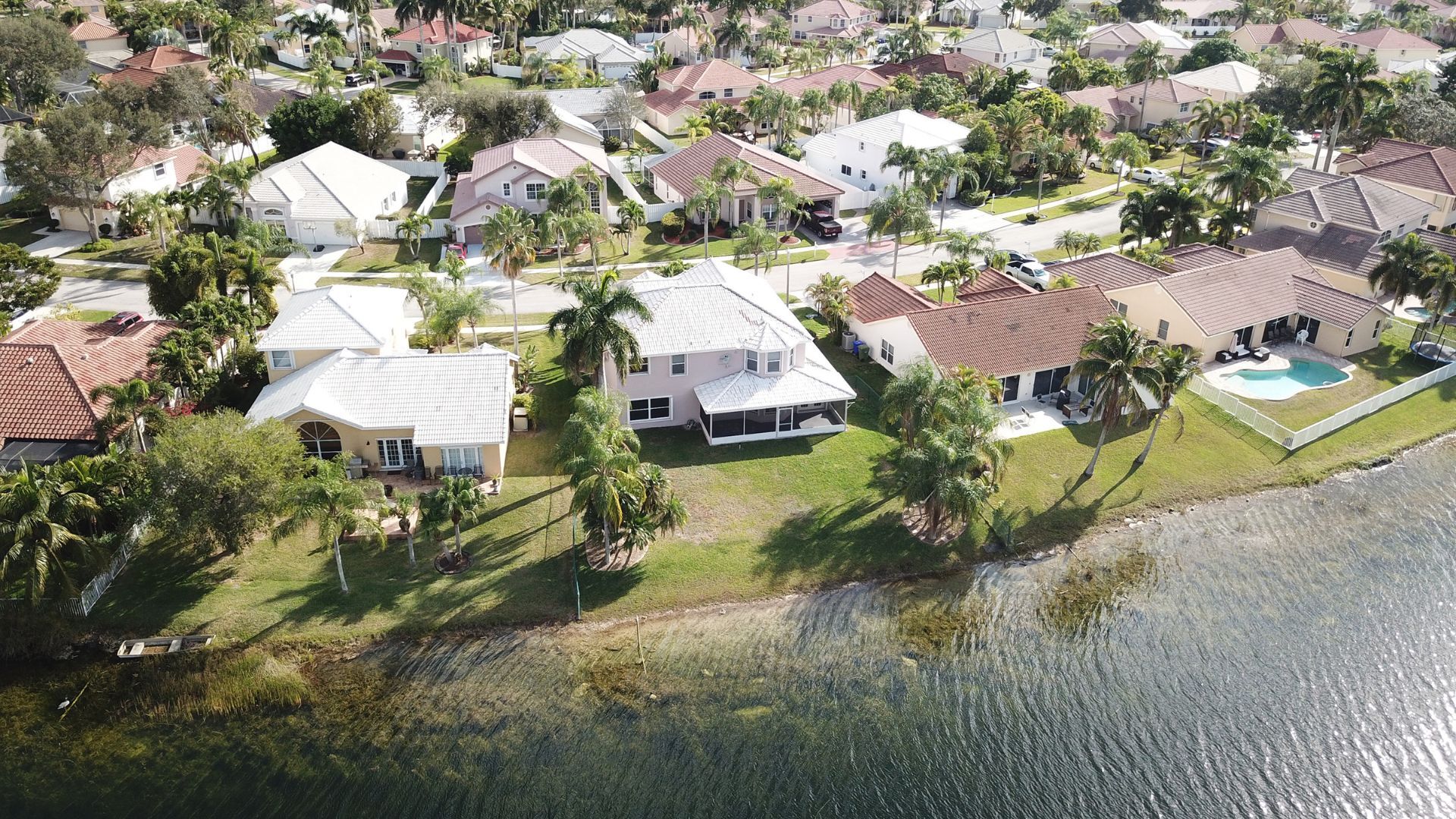Call (727) 784-5555
Federal Reserve approves interest rate hike of half a percentage point
What does that mean for mortgage rates?
The Federal Reserve Wednesday approved a 50 basis point increase to its policy interest rate in an effort to reduce inflation, in conjunction with a plan to shrink its $9 trillion asset portfolio beginning next month, according to Chairman Jerome Powell.
During a news conference following the Fed’s committee meeting, Powell announced the increase and outlined the Fed’s plan to begin “the process of significantly reducing the size of our balance sheet,” he said.
“It is essential that we bring inflation down if we are to have a sustained period of strong labor market conditions that benefit all,” Powell said. “The current picture is plain to see: The labor market is extremely tight and inflation is much too high. Against this backdrop, today the FOMC raised its policy interest rate by a half percentage point and anticipates that ongoing increases in the target rate for the federal funds rate will be appropriate.”
Experts say Wednesday’s move wasn’t a surprise.
“This change had been telegraphed clearly in recent speeches,” said Mike Fratantoni, chief economist for the Mortgage Bankers Association. During the announcement, Fratantoni also made note of Powell’s warning that the committee “anticipates that ongoing increases in the target range will be appropriate.”
“In other words, we are far from done at this point,” said Fratantoni. “MBA forecasts that the Fed funds target will reach 2.5%, the neutral rate, by the end of 2022.”
Between the recent rate hike from the Federal Reserve, the ongoing war in Ukraine and continued economic recovery following the pandemic, mortgage lenders across the country are managing a volatile housing market. Learn how updating your mortgage technology stack can help you get ahead in today’s unpredictable lending environment
Presented by: Polly
As news of the Fed’s decision circulated, the S&P 500, Dow and Nasdaq all rose and extended gains while Realtors, loan officers, mortgage brokers and other industry professionals considered the immediate ramifications on the housing market.
Danielle Hale, chief economist for Realtor.com, said the two go hand in hand.
“Mortgage rates are an incredibly important channel through which Fed policy affects the real economy. In other words, the Fed’s decisions impact household budgets, balance sheets, and spending decisions via their impact on interest rates like mortgage rates. With mortgage rates climbing, up 2 percentage points in the previous 4 months, the financial conditions facing home shoppers have shifted in a big way,” Hale explained.
She also noted inflation is “running at the highest pace in 40-plus years, putting it at a lifetime high for most millennials and younger generations.” But, she concluded, Wednesday’s “vote alone is unlikely to spark a new surge in mortgage rates.”
Fratantoni said MBA expects mortgage rates will plateau near current levels.
“The financial markets have attempted to price in the impact of Fed actions over this cycle, and they are likely also pricing in the economic slowdown that will result,” Fratantoni said. “Once we are past this rate spike and associated volatility, MBA expects that potential homebuyers may be more willing to re-enter the market. Given how much higher rates will remain above the past two years, we do not expect refinance demand to increase any time soon.”
Despite delivering high-level, nuanced details on the Fed’s plan, Powell first made clear the announcement wasn’t aimed at such industry experts. He began his address by saying he wished to speak directly to the American public.
“Inflation is much too high. We understand the hardship it is causing and we are moving expeditiously to bring it back down,” Powell said during the news conference. “We have both the tools we need and the resolve that it will take to restore price stability on behalf of American families and businesses.”
“Our overarching focus is using our tools to bring inflation back down to our 2% goal. With regard to our balance sheet, we also issued our specific plans for reducing our securities holdings. Consistent with the principles we issued in January, we intend to significantly reduce the size of our balance sheet over time in a predictable manner,” Powell said. “We’ll be prepared to adjust any of the details of our approach in light of economic and financial developments.”
Powell said “after expanding at a robust 5.5% pace last year, overall economic activity edged down in the first quarter.” But, he said the labor market has continued to strengthen, despite inflation remaining “well above our longer run goal of 2%.”
“In March the unemployment rate hit a post-pandemic and near-five-decade low of 3.6%,” Powell said, touting the country’s progress.
After discussing how Russia’s invasion of Ukraine is affecting global conditions, Powell said: “Our job is to consider the implications for the U.S. economy — which remain highly uncertain.”
The ongoing invasion is expected to restrain economic activity abroad and will continue to have an affect on the global supply chain, he said.
“Our policy has been adapting and it will continue to do so,” Powell said.
Additional 50 bps increases “should be on the table at the next couple of meetings,” he said.
Powell also explained “the economy often evolves in unexpected ways,” and noted that inflation has “obviously surprised” some during the past year. Powell then warned, “further surprises could be in store.”
But that doesn’t mean everything is unpredictable.
Skylar Olsen, the principal economist at Tomo, also said the move was “already anticipated by the market, but (it was) still the biggest increase in decades. The coming week will bring with it interest rate volatility, but early signals of the market reaction have rates falling, not shooting up,” she said.
Regardless, Powell said the Fed’s focus remains the impact that such decisions have on average Americans.
“We therefore will need to be nimble … and we will strive to avoid adding uncertainty to what is already an an extraordinarily challenging and uncertain time,” he said.
“The Fed’s monetary policy actions are guided by our mandate to promote maximum employment and stable prices for the American people,” Powell said. “We understand that our actions affect communities, families and businesses across the country. Everything we do is in service to our public mission. We at the Fed will do everything we can to achieve our maximum employment and price stability goals.”
HousingWire Lead Analyst Logan Mohtashami further outlined what the interest rate hike might mean for mortgage rates. “The Fed raised rates and talked about bringing inflation down, and after the press meeting, bond yields fell. Why? I believe that many Fed rate hikes have been priced, taking the 10-year yield toward 3.0%. If bond yields keep rising; we have more room to get toward 6.0% on mortgage rates. However, if economic data fades and yields are coming down, mortgage rates will go down with it.
“Right now, we are in a tug of war between two camps. One group believes that the Fed can’t raise rates that much because it will cause a recession, and another group believes the Fed needs to create a recession to fight inflation,” Mohtashami said.
“Since Europe’s economy is slowing down, China’s economy is in a mess, Japan needs more tourism still, and Russia is in a recession, there are limits to how much more global bond yields can head higher and our yields and mortgage rates. We will have to take the economic data one week at a time because we do see some cracks in the inflation data and growth.
“However, the Russian invasion of Ukraine and China’s lockdown have put pressure on inflation data. It’s going to be an epic tug of war for the rest of the year. For now, the 10-year yield has held around the 3.0% level without a breakout. The peak yield on the 10-year yield was 3.25% in 2018 when mortgage rates got to 5.0% back then. Rates are obviously higher today as the mortgage rate pricing is worse.”
This story was updated with industry reaction after initial publication.
Start Your Loan
with DDA todayYour local Mortgage Broker
Mortgage Broker Largo See our Reviews
Looking for more details? Listen to our extended podcast!
Check out our other helpful videos to learn more about credit and residential mortgages.





